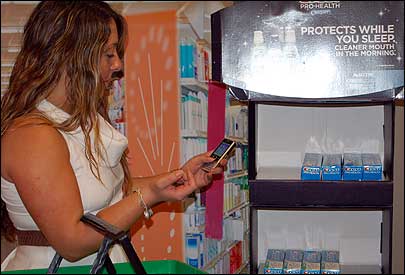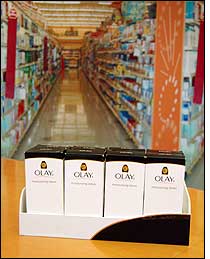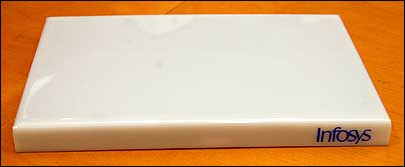Three retail and consumer packaged goods (CPG) companies on as many continents are currently piloting versions of a system that employs a hosted software application, active wireless sensors and RFID transponders to allow vendors to track their stock on store shelves, and to enable stores to track the movements of customers and staff members anonymously. The system, known as ShoppingTrip360, was developed by Infosys and, according to Girish A. Ramachandra, head of the company’s innovations practice for retail, CPG and logistics, offers an alternative to item-level RFID tagging.
Infosys sees ShoppingTrip360 as a less expensive solution for tracking product stocking, shrinkage and consumer traffic in stores than item-level RFID, which requires that a large number of RFID tags be affixed to individual products. Tagging each item, Ramachandra says, is not a realistic solution for many CPG companies and retailers.

On the other hand, he notes, ShoppingTrip360 provides visibility into activity within a store without tagging each product, and without raising security concerns for customers, because there are no identifiers or tags on products that consumers purchase and take home. The software application allows stores and CPG companies to track shoppers and inventory on the sales floor, by means of wireless sensors and transponders attached to shelving, promotional displays and shopping carts.
The sensors and transponders transmit 2.4 GHz signals that comply with the IEEE 802.15.4 protocol (the same specification on which ZigBee is based), communicating with each other in a mesh network. The system includes Infosys smart shelf pads, each of which incorporates a sensor, powered by the store’s lights, that detects the presence of product on a shelf. Ramachandra declines to comment on how this proprietary system’s sensors detect a product, however.

Each smart shelf pad is placed in a container in which products are displayed on the store shelf. The pad detects when items are removed from its surface and transmits that data, along with its unique ID number, to the store’s back-end system. Data is then made available in the back-end system, indicating product inventory levels by matching the sensor data either with the store’s planogram (store layout diagram) or against data input about the location of specific items throughout the store.
If inventory drops below a predetermined amount on any specific pad sensor, the ShoppingTrip360 system transmits an alert via e-mail to interested parties, such as the store’s manager or the CPG company. Because the system will be utilized for select, high-value or high-turnover products, Ramachandra says, stores are unlikely to confuse items that could be placed on the wrong pads. “The inability to distinguish the case of a wrong product,” he states, “is much less of a problem compared to the cost of stock-outs.”
In another version of the system, shopping carts in the store can be equipped with battery-powered or light-powered transponders that transmit their unique ID numbers. Pad sensors connected to battery-powered transponders attached to shelves capture the ID number transmitted by the shopping cart transponders, and with multiple shelf sensors within read range, the retailer is able to detect the location based on which sensors receive transmissions from the shopping cart transponder as it passes through the aisles.
ShoppingTrip360 software displays the carts in the back-end system on a “heat map,” with each cart depicted as a small dot. As a shopper pauses at a display, the system can track that action and create analytics indicating the number of shoppers who were attracted to a specific display, as well as the amount of time they spent at that spot.

The system can also be used to track shelf-stocking. A stocking cart—fitted with a transponder encoded with an ID number indicating the cart is being used for stocking rather than for shopping—is filled with products in the back room. When the cart enters the sales floor, the shelf transponders begin locating and transmitting the cart’s store location. This enables managers to know which shelves are being stocked at any particular time, and how long it takes to do so.
Additionally, the system platform allows customers to use their cell phones to gain coupons or recommendations from a store. First, a customer must download the ShoppingTrip360 software. Upon arrival at the store, the consumer follows prompts on that person’s cell phone, to set up a temporary account by entering the cart’s wireless transceiver ID number. This is done through the specific store’s local network provider. The system then knows where the customer is located within the store, based on the unique ID number, and can display coupons and recommendations based on items in the cart’s immediate area on the cell phone, via its network connection.
Stores can utilize the heat map to analyze traffic in the store, determining areas where customers congregate, how long people must wait at the checkout counter and the number of sales missed when customers stop at a shelf where items are out of stock. Infosys does not charge stores for the cost of installing hardware or software, Ramachandra says. Instead, the company collects a service fee for the particular applications the store uses. The price, he explains, depends on the number of services utilized.
Ramachandra compares the ShoppingTrip360 system with the manner in which customers shop online. “The nature of the online community,” he says, “is that you know what clicks there were—you know how many customers open a window.” In a typical supermarket, however, almost none of that visibility exists. “The point of sale is typically the first interaction,” he states.
Three unspecified companies are currently testing the ShoppingTrip360 services in North America, Europe and Asia. According to Ramachandra, Infosys is now in discussions with other companies interested in piloting the system as well.


